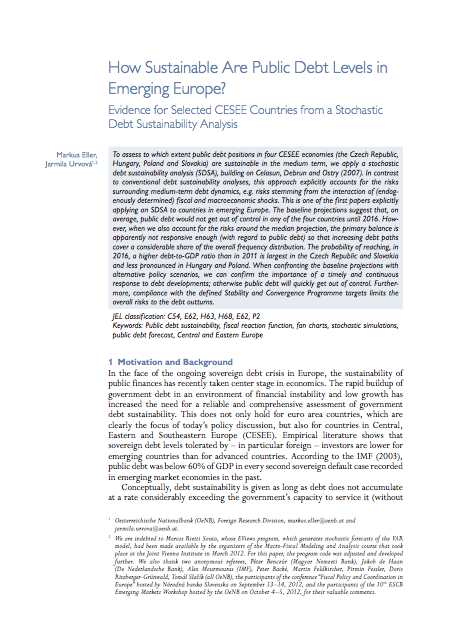How Sustainable Are Public Debt Levels in Emerging Europe?

Language:
English
Provider:
OeNB
Pages:
32
To assess to which extent public debt positions in four CESEE economies (the Czech Republic,
Hungary, Poland and Slovakia) are sustainable in the medium term, we apply a stochastic
debt sustainability analysis (SDSA), building on Celasun, Debrun and Ostry (2007). In contrast
to conventional debt sustainability analyses, this approach explicitly accounts for the risks
surrounding
medium-term debt dynamics, e.g. risks stemming from the interaction of (endogenously
determined) fiscal and macroeconomic shocks. This is one of the first papers explicitly
applying an SDSA to countries in emerging Europe. The baseline projections suggest that, on
average, public debt would not get out of control in any of the four countries until 2016. However,
when we also account for the risks around the median projection, the primary balance is
apparently not responsive enough (with regard to public debt) so that increasing debt paths
cover a considerable share of the overall frequency distribution. The probability of reaching, in
2016, a higher debt-to-GDP ratio than in 2011 is largest in the Czech Republic and Slovakia
and less pronounced in Hungary and Poland. When confronting the baseline projections with
alternative policy scenarios, we can confirm the importance of a timely and continuous
response
to debt developments; otherwise public debt will quickly get out of control. Furthermore,
compliance with the defined Stability and Convergence Programme targets limits the
overall risks to the debt outturns.
Economy
|
Czechia
|
December 01, 2012
